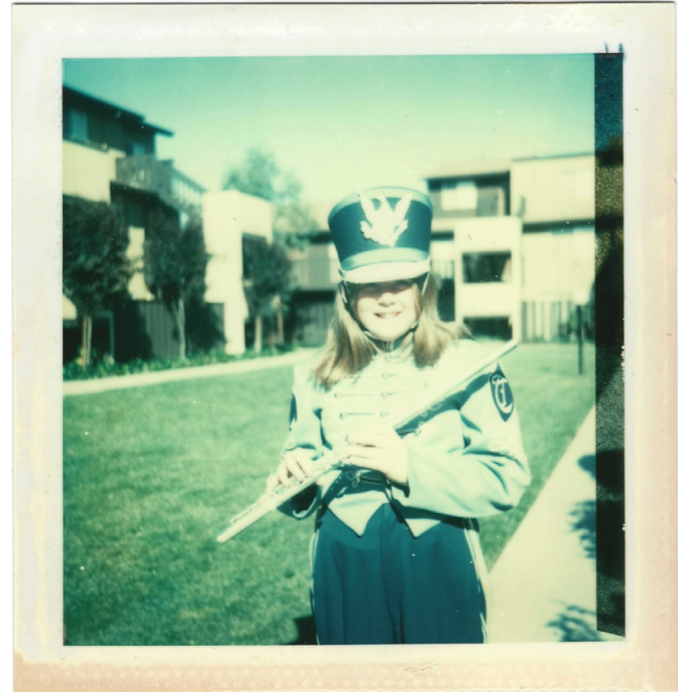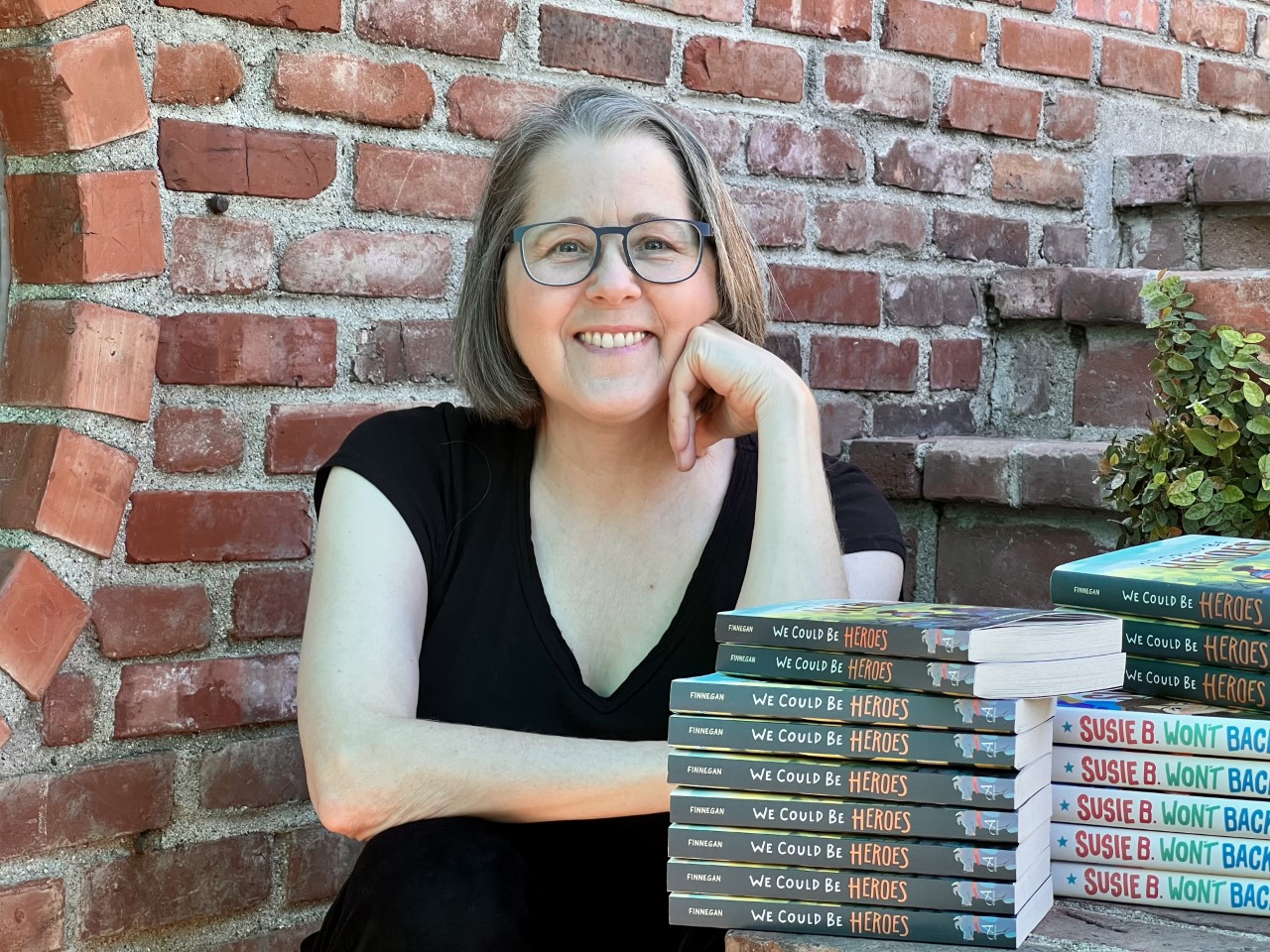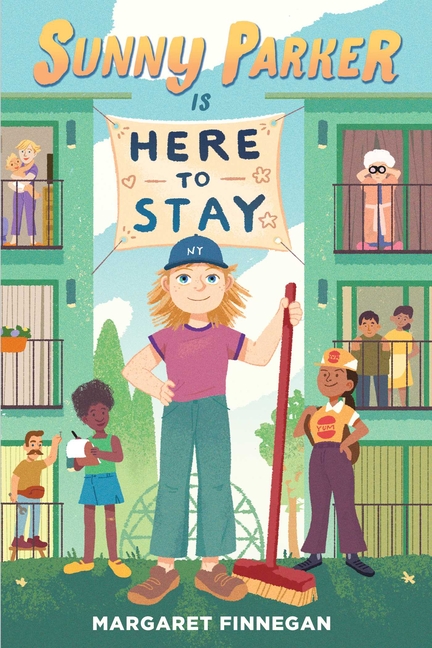It’s All About Me, Except It’s Not
The main character in my new book, Sunny Parker is Here to Stay (Simon & Schuster, 2024), came to me out of the blue. She just popped into my head: a sunny-faced girl with big cheeks riding her bike along the sidewalk of her courtyard-facing apartment.
Immediately, I recognized that girl as me. I’d had big cheeks. I used to ride my bike along the sidewalk of my courtyard-facing apartment. But I also knew that that girl was not me. That girl was at ease in her own body; kid-me felt awkward and ungainly. That girl was warm and welcoming and had no problem making friends. Kid-me could be warm and welcoming, but she could also keep to herself, which was easy since many people thought she was weird.
Smitten with that sunny-faced girl, I decided to write about her. But a character needs a story, so I began to wonder what her story might be. I’d been thinking about affordable housing because aren’t we all thinking about affordable housing in these days of skyrocketing home prices? Where I live, in Los Angeles County, over 75,000 people lived unhoused in 2023. For them, if they were lucky, affordable housing might have meant a tiny house smaller than a luxury closet or it might mean a single-occupancy room in a motel.
I used to live in affordable housing. I lived in a very similar apartment complex to the one I imagined for Sunny. Mine was in beautiful Palo Alto, California, and I lived there from the late 1970s to the mid-1980s. It was nothing fancy. There was no dishwasher, no air conditioning. But it was roomy enough for my mom, my sister, and me. We each had our own bedroom. We had a lawn out front where kids could play. It was a clean and decent place, a place you could call home and invite your friends.
When I was in high school, the city of Palo Alto considered bringing more affordable housing into the community. I wrote a letter to the local newspaper supporting the plan. A week after it was published, a man sent me a letter attacking my position. This was before the Internet, which meant this man took a phone book, looked up my family name, typed the letter on a typewriter, and sent that letter. To a fourteen-year-old girl.
I had never been so creeped out. Not because he disagreed! But because he tracked me down.
So much has changed since then. What affordable housing looks like has changed. The accessibility of affordable housing has changed. How we find and communicate with people has changed.

You know what hasn’t changed? The bullseye you’ll feel on your back—even if you’re a child—if you publicly advocate for bringing affordable housing into a “nice” community, like the one I lived in. In a town not far from where I live now, the developers of a proposed affordable housing complex were sent dead rats in the mail for their efforts. I was lucky I just got a letter!
Which brings me back to Sunny Parker. Poor sweet, welcoming, Sunny Parker. I put her in the middle of all of this! Like when I was a child, she lives in a decent affordable house in a rather affluent community. Like when I was a child, she supports the building of more complexes like her own. Like when I was a child, she faces the consequences.
Still, Sunny is not me. She’s just not. She’s braver and stronger. She has a heart the size of Alaska, and she has a big community and really good friends.
Except, she is kind of me too. But not because of her circumstances—so much has changed for that to be the fact. She’s me because I don’t think I know how to write a character that doesn’t have a tiny piece of me in them. I contain multitudes—don’t we all—and every bit of Margaret wants her turn.
But maybe I’m not alone. Humans learn by analogy. It’s what they do. Maybe, for every writer out there, creating a believable character is an exercise in building analogies so that they can get closer to the truth of what it’s like to be someone else.
I can know that Sunny Parker will feel a bullseye on her back when some members of her community criticize her for wanting more affordable housing in her mostly white community. I know that because I’ve felt that. But I can’t know exactly what Sunny’s best friend, who is Black and who is Sunny’s neighbor, will feel when that same bullseye rests on her. I can try to understand what Sunny’s best friend will feel, but as a white woman, the closest I can really get is through the creative, analogizing act of empathy. I can hope that that analogizing act gets me close. I can hope even more that that analogizing act helps Sunny get close.
But do you see why this matters? Why writing matters? Why reading literature matters? Why teaching matters? It is through those analogizing acts that we gain perspective and understanding on the lives of people like and unlike us. What we write, what we read, really does help us try on and understand other identities.
Which leads me to this, my fellow teachers: We are saving the world one beautiful book at a time. We are building bridges of empathy that challenge tribalism and hate. We are changing lives and societies, and we are healing cultures. So, of course, some people will doubt our professionalism; they will doubt the value of our work. We are world builders. They should be afraid.
Hear Margaret Finnegan’s Audio Name Pronunciation
Listen to a Meet-the-Author Recording for Sunny Parker is Here to Stay
Explore Margaret Finnegan’s author page on TeachingBooks
Text and images are courtesy of Margaret Finnegan and may not be used without express written consent.




World builders are welcome on my bookshelf. In fact, if it weren’t for the many authors who took the time to build the worlds I’ve visited via books, I don’t know where I would have ended up, or how.
Writers such as Margaret Finnegan are indeed building bridges that take courage and guts. So I say to these individuals, all the more power to you! And thank you for your hard work as creative thinkers; your words are invaluable.